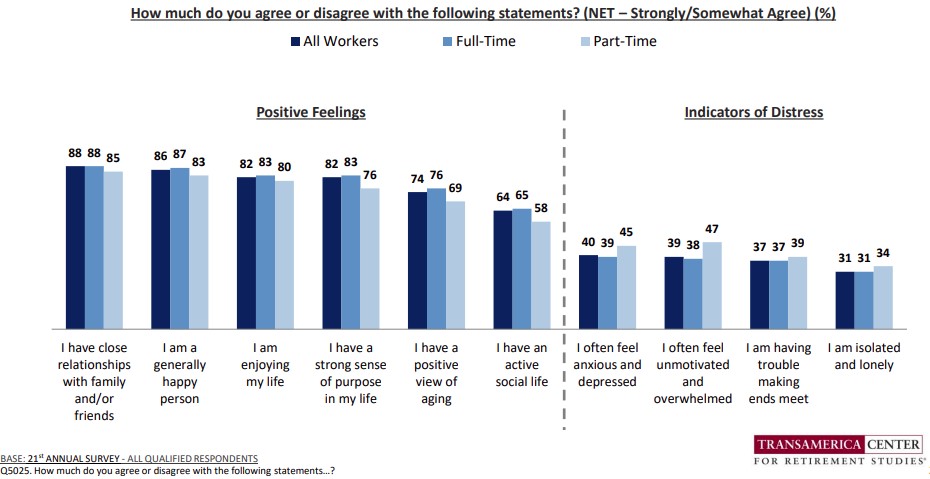A new report from the Transamerica Center for Retirement Studies® finds that, on average, 24 percent of U.S. workers are “very” confident that they will fully retire with a comfortable lifestyle, but the numbers vary widely depending on a person’s demographics.
Titled A Compendium of Findings About the Retirement Outlook of U.S. Workers, the study finds that 34 percent of workers with a household income (HHI) of $100,000+ are very confident about their future retirement, compared with 14 percent of those with an HHI of $50,000 to $99,999 and just 11 percent with an HHI of less than $50,000.
Urban workers (32 percent) are more likely than suburban (19 percent) and rural workers (16 percent) to be very confident about their retirement prospects, and full-time workers (25 percent) are more likely than part-time workers (15 percent) to be very confident.
“Demographic influences can profoundly affect a worker’s ability to save, plan, and prepare for a financially secure retirement. A greater understanding of these influences can help identify opportunities, envision solutions, and inform public policy priorities for strengthening our retirement system,” says Catherine Collinson, CEO and president of Transamerica Institute. Other highlights:
- Workers with an HHI of $100,000+ (91 percent), remote (90 percent) and caregiver workers (90 percent) are more likely to be saving for retirement. Part-time workers (66 percent) and those with an HHI of less than $50,000 (60 percent) are less likely to be saving;
- Workers with an HHI of $100,000+ have saved $200,000 for retirement while those with an HHI of $50,000 to $99,999 have saved $47,000, and those with an HHI of less than $50,000 have saved $3,000 (estimated medians).
- Caregiver (47 percent), hybrid-work-arrangement (45 percent), urban (42 percent) and workers with an HHI of $100,000+ (42 percent) are more likely to have a written retirement plan. Part-time (20 percent) and rural workers (20 percent), and those with an HHI of less than $50,000 (16 percent) are less likely to have one.


